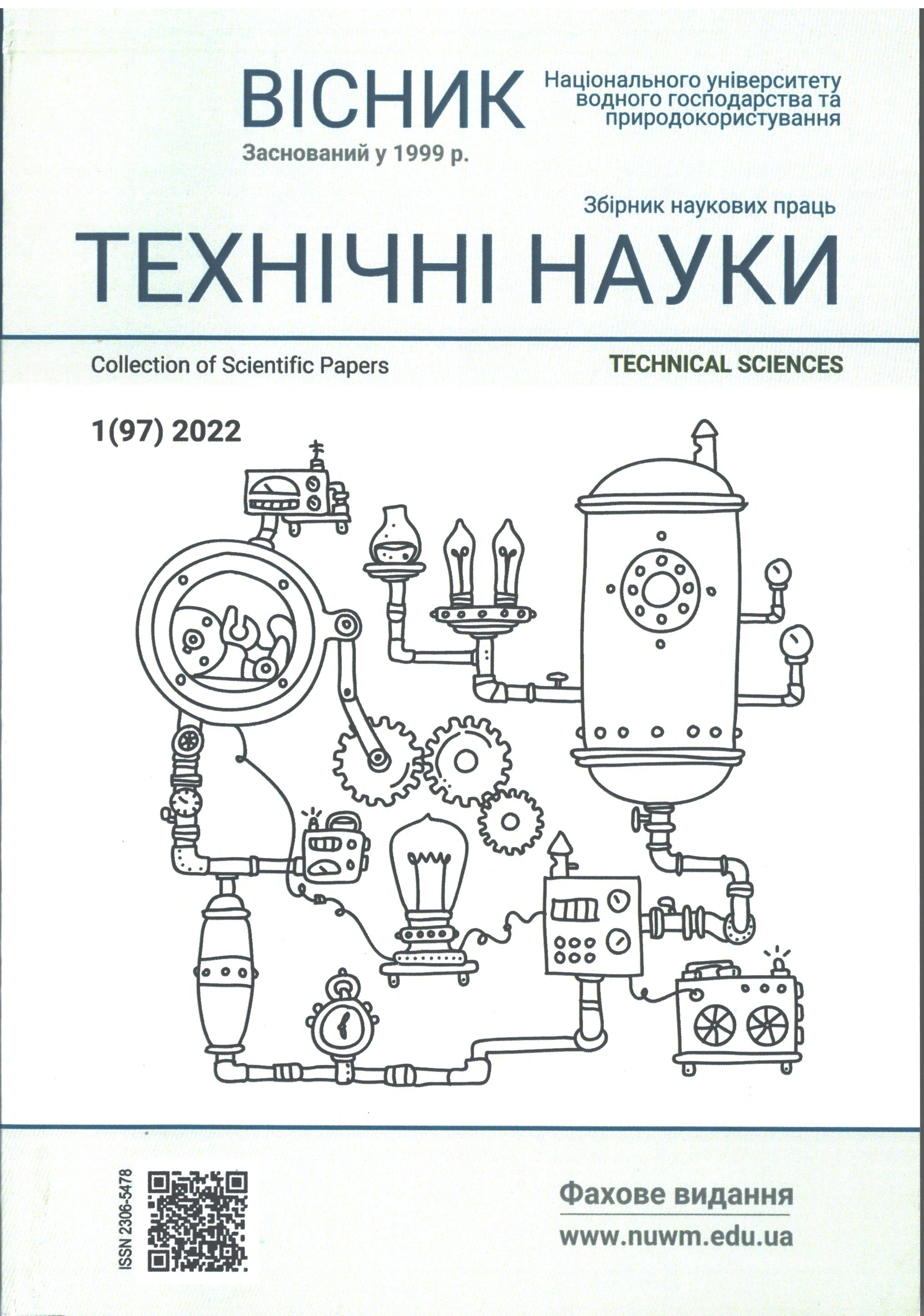WASTEWATER TREATMENT OF THE HOTEL-RESTAURANT COMPLEXES
DOI:
https://doi.org/10.31713/vt120222Keywords:
wastewater, biological treatment, microflora, conditions, redox indexAbstract
Wastewater of the hotel-restaurant complex can be described as a complex system that includes organic and inorganic impurities with artificial and natural origin. For the treatment of such effluents, the traditional technology is a combination of mechanical and biological treatment blocks, which is effective only for low contaminants concentrations and can’t provide deep wastewater treatment. A related issue is the regulation of the redox state in the biologicaltreatment block, which is important for the direction of biochemical processes and ensuring optimal conditions for the functioning of activated sludge (biofilm) microflora. Research results on wastewater treatment by traditional technology of real sanatorium hotelrestaurant complexes «Crimea» and «Yaremche» are presented. The treatment effect in this case is insufficient and varies from 96% for the value of BOD5 in the pre-aerator 1260 mg02 /dm3 to 67% for the value of BOD5 in the pre-aerator 1680 mg02 /dm3. According to the concentration of phosphates, the treatment effect reduced by 20%.The decrease in the treatment effect corresponds to lower values of parameters (Eh, rH2), which characterize the energy of redox reactions. To increase the effect of wastewater treatment, the technology based on a combination of physic-chemical and biological methods is proposed. The technology involves the following stages:mechanical treatment of coarsely dispersed impurities; biological treatment under anaerobic conditions with the addition of hydrogen peroxide or iron-containing coagulant (provides optimal conditions for further treatment by aerobics); biological treatment under aerobic conditions (provides good physiological adaptation and activity of microorganisms depending on the reduction of the contaminants concentration); sedimentation and separation of the stream for the final additional biological treatment. Utilisation of this treatment technology allows to obtain water with parameters within thepermissible concentrations: BOD5 – 2,5 mg02/dm3, suspended solids – 1,8 mg/dm3, ammonium nitrogen – 0,28 mg/dm3, nitrate nitrogen – 0,05 mg/dm3, phosphates – 0,15 mg/dm3. The results of research indicate that the application of the proposed technology and regulation of the wastewater redox potential provides increased efficiency of hotel-restaurant complexes wastewater treatment.References
Яковлев С. В., Карюхина Т. А. Биохимические процессы в очистке сточных вод. М. : Стройиздат, 1980. 198 с.
Установка для глубокой биологической очистки сточных вод. № 2220918 RU, CI, кл. C 02F 3/30, 2004.
Способ глубокой биологической очистки сточных вод и станция глубокой очистки сточных вод: пат. RU № 2225368 СІ, кл. С 02F 3/30, 2004.
Загорная Н. Б., Никоненко В. У., Чеховская Т. П., Гвоздяк П. И. Биоразрушение ксенобиотиков в сточных водах производства фенолформальдегидных смол. Химия и технология воды. 1987. № 4. Т. 9. С. 357–359.
Дмитренко Г. Н., Гвоздяк П. И. Альтернативные акцепторы электронов при окислении органических веществ микроорганизмами в очистке воды. Химия и технология воды. 1991. № 9. Т. 13. С. 857–861.
МВВ № 081/12-0317-06. Поверхневі, підземні та зворотні води. Методика виконання вимірювань водневого показника (рН) електрометричним методом.
Вода питна. Нормативні документи : в 2-х т. Львів : НТЦ «Леонормстандарт», 2001. Т. 2. 234 с.
КНД 211.1.4.021-95. Методика визначення хімічного споживання кисню (ХСК) в поверхневих і стічних водах.
КНД 211.1.4.043-95. Методика фотометричного визначення фосфатів у стічних водах.
Радченко О. С., Собчук Л. А. Микробная очистка СВ производства синтетических жирных кислот (СЖК) в анаэробных условиях. Химия и технология воды. 1994. № 3. Т. 16. С. 322–328.
REFERENCES:
Yakovlev S. V., Karyuhina T. A. Biohimicheskie protsessyi v ochistke stochnyih vod. M. : Stroyizdat, 1980. 198 s.
Ustanovka dlya glubokoy biologicheskoy ochistki stochnyih vod. № 2220918 RU, CI, kl. C 02F 3/30, 2004.
Sposob glubokoy biologicheskoy ochistki stochnyih vod i stantsiya glubokoy ochistki stochnyih vod: pat. RU №2225368 SІ, kl. S 02F 3/30, 2004.
Zagornaya N. B., Nikonenko V. U., Chehovskaya T. P., Gvozdyak P. I. Biorazrushenie ksenobiotikov v stochnyih vodah proizvodstva fenolformaldegidnyih smol. Himiya i tehnologiya vodyi. 1987. № 4. T. 9. S. 357–359.
Dmitrenko G. N., Gvozdyak P. I. Alternativnyie aktseptoryi elektronov pri okislenii organicheskih veschestv mikroorganizmami v ochistke vodyi. Himiya i tehnologiya vodyi. 1991. № 9. T. 13. S. 857–861.
MVV № 081/12-0317-06. Poverkhnevi, pidzemni ta zvorotni vody. Metodyka vykonannia vymiriuvan vodnevoho pokaznyka (rN) elektrometrychnym metodom.
Voda pytna. Normatyvni dokumenty : v 2-kh t. Lviv : NTTs "Leonormstandart", 2001. T. 2 234 s.
KND 211.1.4.021-95. Metodyka vyznachennia khimichnoho spozhyvannia kysniu (KhSK) v poverkhnevykh i stichnykh vodakh.
KND 211.1.4.043-95. Metodyka fotometrychnoho vyznachennia fosfativ u stichnykh
vodakh.
Radchenko O. S., Sobchuk L. A. Mikrobnaya ochistka SV proizvodstva sinteticheskih jirnyih kislot (SJK) v anaerobnyih usloviyah. Himiya i tehnologiya vodyi. 1994. № 3. T. 16. S. 322–328.

